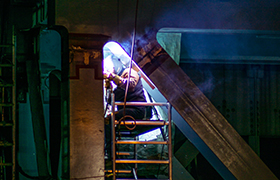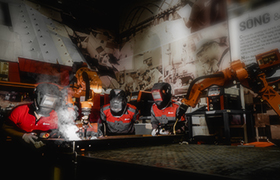Common protection methods and measures for the hydraulic system of fully automatic molding machines
Release Time: 2023-10-24
Hydraulic systems are widely used in machinery due to their unique advantages such as wide process adaptability, excellent control performance, fast response, and large output force (or torque). Hydraulic problems refer to the phenomenon of hydraulic components or systems losing their intended function and experiencing certain problems. There are several conditions for functional loss, and complete loss of function is a destructive disease; Reducing functionality is a functional issue; The problems caused by people's incorrect operation and assembly are malfunctions, manifested in oscillation and noise. The loss of function is often associated with the occurrence of problems, which are all caused by the internal and external conditions of the hydraulic system failing to meet the requirements of its normal operation. In view of this, the protection and maintenance of the hydraulic system of the fully automatic molding machine have been carried out.
Analyze and comment on the faults of the hydraulic system of the fully automatic molding machine, focusing on discussing the protection methods for the hydraulic system, in order to find feasible and effective maintenance and protection methods and measures, and share them with a wide range of peers.
1、 Analysis of hydraulic system defects in fully automatic molding machines
1. Characteristics of hydraulic system defects in fully automatic molding machines
Compared to general mechanical and electrical problems, hydraulic problems have the following characteristics.
(1) The damage and failure of the hydraulic device of the concealed fully automatic molding machine often occur in the deep interior. Due to the inconvenience of assembly and disassembly, and the limited testing conditions on site, it is difficult to observe directly. This is true for all types of pumps, valves, hydraulic cylinders, and hydraulic motors. Due to the limited number of surface symptoms and the influence of random factors, fault analysis is difficult. The internal hole system of large hydraulic valve plates is crisscrossed, and if there is collusion and blockage, the hydraulic system will have serious imbalance, making it difficult to find the fault point in this situation. (2) There are various types of stacking and overlapping between the symptoms and causes of the hydraulic system defects of the interlocking fully automatic molding machine. There are various possible reasons for a symptom, such as slow speed of the actuator, which can be caused by excessive load, wear and tear of the actuator itself, excessive guide rail error, leakage ports in the system, faults in the pressure regulating system, speed regulating system, and pump. A single source of illness may also cause multiple symptoms, and a symptom may also be composed of multiple sources of illness stacked together. Regarding the phenomenon of superposition, it is necessary to comprehensively consider each influencing factor and distinguish the priority and importance of each factor's effect.
(3) During the operation of a random hydraulic system, it is affected by various random factors, such as changes in grid voltage, environmental temperature, and machine work tasks. The invasion of external pollutants is also random. Due to the influence of random factors, the detailed direction of fault occurrence changes; Uncertainty leads to difficulties in discrimination and quantitative analysis.
(4) Differences arise due to differences in planning, processing materials, and usage environments, resulting in significant differences in the rate of wear and deterioration of hydraulic components. General specifications for the lifespan of hydraulic components cannot be used on site, and detailed wear evaluation specifications can only be determined for detailed hydraulic equipment and components, which requires accumulating long-term operational data.
Related Recommendations




